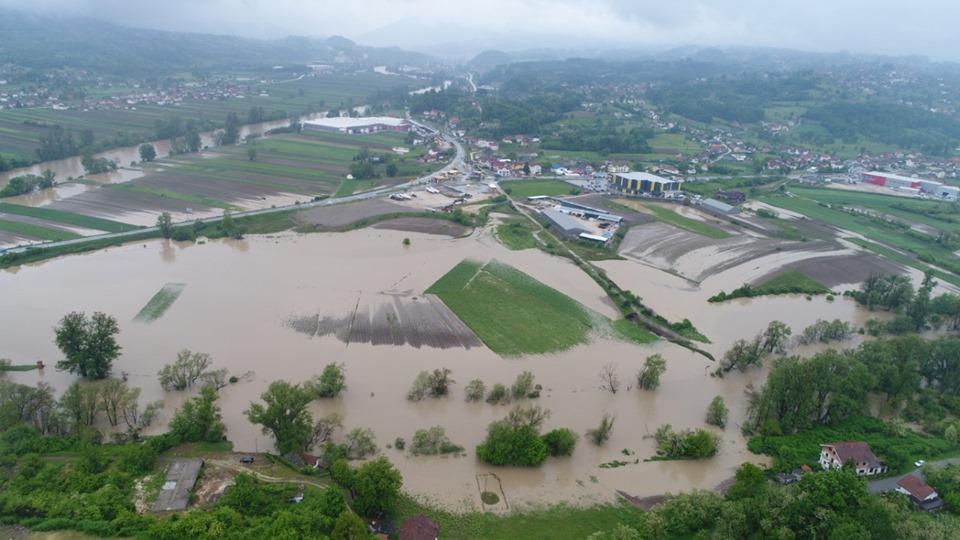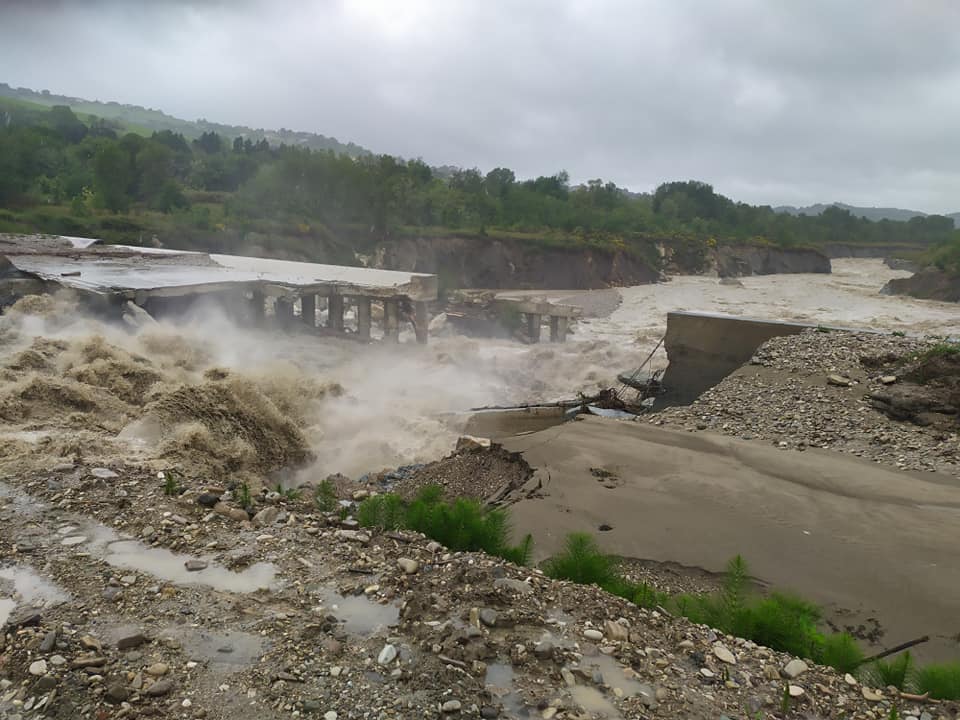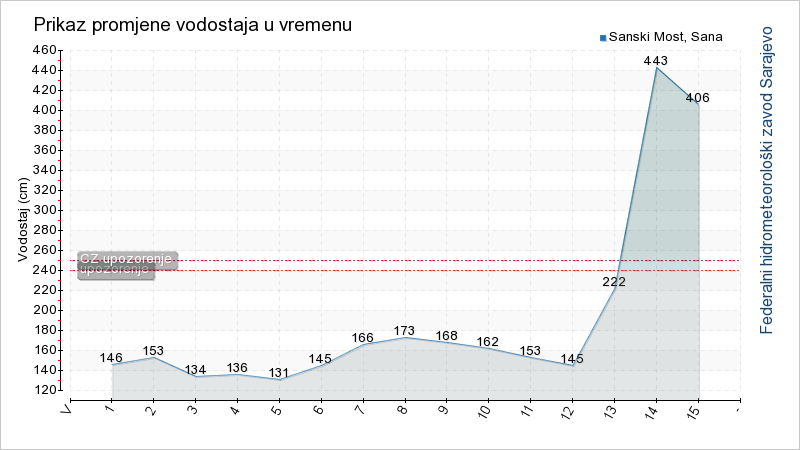
by Richard Davies, floodlist.com
A period of stormy weather caused flooding and landslides in Italy, Croatia and Bosnia and Herzegovina from 12 May, 2019.
Italy
In Italy, heavy rain and overflowing rivers caused flooding in parts of the Emilia-Romagna Region. According to the region’s meteorological agency Arpae Emilia-Romagna, several areas recorded more than 100 mm of rain in 24 hours on Sunday, 12 May, and around 70 mm the next day. The Savio River at Castiglione di Ravenna near Cesena jumped from 1.53 metres on 12 May to 9.8 metres the next evening. Vigili del Fuoco, the Italian Fire Service, carried out flood rescues in Cesena. Parts of the Bologna-Rimini train line was temporarily closed. For a detailed study of the Emilia-Romagna floods, please see the report here.
Areas of Villafranca-San Martino in the province of Forlì-Cesena were flooded after the Montone river broke its banks. The Montone river at Ponte Vico jumped from 1.5 metres on 12 May to 8.83 metres on the evening of 13 May. Flooding also caused a bridge to collapse in Verucchio in the Province of Rimini.

Croatia
Heavy rain in Croatia also caused rivers to rise rapidly during this period. Civil Protection reported they had raised flood defences in Hrvatska Kostajnica and Karlovac. Local media said fire services have been called on to rescue several people from flood waters. According to Croatia Water (Hrvatske vode) on 15 May the Una river stood at 4.64 metres at Hrvatska Kostajnica, and the Korana at 7.87 metres at Karlovac, both red alert levels. Meanwhile the Sava river at Jasenovac jumped to 8.05 m, which is orange alert level. Strong winds of had also affected parts of the country from 12 May, in particular in Zagreb, where 4 people were injured, and buildings, tree and power lines were damaged.
Bosnia and Herzegovina
In Bosnia and Herzegovina, Civil Protection Agency (Federalna Uprava Civilne Zaštite – FUCZ) said on 14 May that a state of natural disaster was declared in Sanski Most, Bosanska Krupa, Cazin, Kljuc, Banovići, Usori, Tešanj and Doboj Jug as result of “abundant precipitation.” Hundreds of Civil Protection staff were deployed to affected areas including Sanski Most, Usora and Doboj Jug. Houses and crops were damaged and power and water supply severely disrupted. Flooding and landslides blocked several roads and some schools were closed. Federalni hidrometeorološki zavod (FHMZ), reported 84 mm of rain in Bihać in 24 hours to early 13 May and a further 53 mm the next day. The city of Banja Luka recorded 49mm to 13 May and 62 mm the next day. According to FHMZ, the Una river at Bihać reached 78cm on 14 May and the Sana at Sanski Most 4.23 metres.

EFAS notifications
There were several EFAS formal, informal and flash flood notifications issued before these events. Three flash flood notifications were issued for the Emilia-Romagna region several days ahead of the event, however they were a bit north of the most affected regions. Several formal and informal notifications were issued for the floods in Croatia and Bosnia-Herzegovina, notably for the Una and Korana river. In total 5 flash flood notifications were sent for those countries, and another 8 to neighboring countries during the event.

